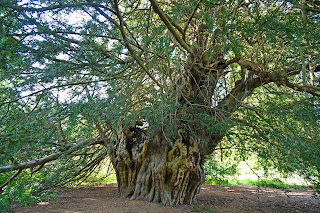A Hike around Windsor
I did not have much time to explore the environs of Windsor Castle last time I went, and ever since then, I had been planning to make a proper tour of the all the major sights in the area. The opportunity finally presented itself in May, as the weather was very nice, and my housemate Luqman and I were thinking of making another hike.
Since it
was a Sunday, we had to leave Oxford somewhat later than I would have wanted
to. The first London-bound trains only begin to depart after eight o’clock,
meaning that we got to Slough a little after nine. Having considered taking the
connecting train to Windsor, we decided against this option. We both wanted to take
a look at Eton, which is right on the way to Windsor, and whose addition to
our itinerary would not pose an insupportable increase to our mileage.
Unsurprisingly,
Eton turned out to be a ghost town on Sunday morning, and we could glean
little of what life is like for its students. Of those, we only saw three, all
clad in whatever the correct term is for the fanciest clothes one can force on
a child. What we did see surprising numbers of, however, were Union Jacks,
which hung from house to house and across the main street towards the centre of
the town. We imagined that their presence was probably due to the Queen’s
upcoming jubilee (likely the last jubilee, as far as I understand it, that my
generation might see).
Upon
reaching Windsor Castle, we began our southward course along the very straight
and aptly named Long Walk. That walk in itself may have taken about three
quarters of an hour, and we felt very smug for having remembered to put on
sunscreen; the alley of chestnut trees along the sides was too broad to provide
any respite from the sun.
At the end
of the Long Walk is an equestrian statue of King George III, which faces
Windsor Castle and can be spotted – thanks to its massive size and prominent
position – all the way from the beginning of the asphalt path. Luqman and I,
however, continued past the statue into the Great Park, after which followed
the Valley Gardens. Among the more bizarre things we saw on the way was a game
of horse polo, which I had never seen in real life, but the rules of which I
could vaguely make out from the action on the field. A groundskeeper in a straw
hat soon approached us to let us know that we were very close to the line of
fire and had better move in case a ball came flying in our direction.
By
comparison, the gardens felt much more peaceful. They were all abloom with
azaleas and rhododendrons, and the monoculture of beech trees still glowed with
the distinctly verdant sheen of early spring. Among the more bizarre sights
there was a totem pole, dedicated to Queen Elizabeth II by “the people of
Canada” to mark one hundred years since British Columbia was proclaimed a crown
colony. The centenary is cleverly referenced by the pole’s height of exactly
100 feet.
We
continued eastwards from the park, eating lunch at a Lebanese place, and
chancing upon a very picturesque catholic church (dedicated to the Assumption
of Our Lady) in Englefield Green. It was then that we realised we had already
walked around fifteen kilometres, even though I had estimated the entire walk
(the larger portion of which still awaited us) would not be much longer than
twenty-five. Because of a number of additions to our itinerary and accidental
detours, it ended up much closer to around thirty-seven.
The first
proper stop on the second half of our trip was the Runnymede Air Forces
Memorial, which overlooks the Thames all the way to Heathrow Airport. So we
imagined, at least, for we saw many aeroplanes take off and land close to the
horizon. The most haunting feature of the memorial were its blank walls, which
seem to purposely have space for the engraving of more names.
In
retrospect, we seem to have taken a wrong turn after the Air Forces Memorial.
While we should have taken a right and walked straight down into Runnymede, we
took a left and descended very slowly and circuitously towards the park. Misjudging
once again, we decided to go back to the beginning after walking around and
seeing the various memorials, although we could have simply continued and
re-joined the river later. The most famous among these sights is the memorial
to the Magna Carta, which was purportedly signed at the spot in 1215. Some
speculate, however, that the document was signed under the now 2500 year-old
Ankerwycke Yew.
The most
painful part of the walk was probably the last leg, when we trudged along the
Thames, crossed it, and then walked back westwards again, all the while not
quite knowing whether we were following the right road. Finally, some
passers-by set us on the right course, and we reached the Ankerwycke Yew
without too many difficulties. In keeping with the chaotic mood of the entire
trip, we took the train from Wraysbury to Windsor, then another train from
Windsor to Slough, and finally the return train from Slough to Oxford, arriving
just in time to hungrily cook ourselves a late dinner.














































Comments
Post a Comment